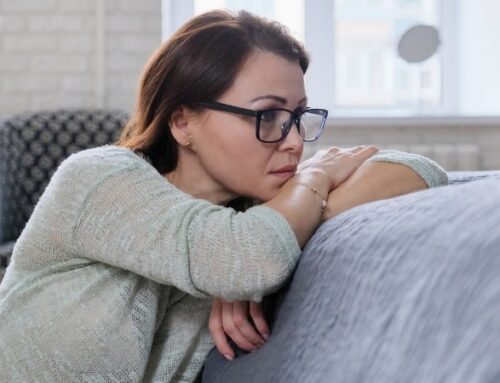Anxiety disorders are the most common mental illness in the U.S., affecting 40 million adults 18 years of age and older, or 18% of the population (National Institute of Mental Health). Although highly treatable, only one-third of anxiety sufferers seek treatment (Association and Depression Association of America). In contrast to people who don’t suffer with anxiety, people with anxiety disorders are 3 to 5 times more likely to go see a physician and 6 times more likely to be hospitalized for psychiatric disorders. Anxiety sufferers are more likely to also suffer with depression, and almost half of those diagnosed with depression also have a co-occurring anxiety disorder.
Generalized Anxiety Disorder (GAD) impacts about 6.8 million American adults or 3.1% of the total adult population. People with this disorder have persistent and excessive worry over which they can exercise little, if any, control. It’s as if their brains are in “overdrive mode” and they can’t slow their worry down. Their anxiety is typically relentless and way out of proportion to any actual danger. Sufferers may recognize their worry is out of proportion to reality, but report an inability to turn off their worry. Anticipating a worst-case scenario, their worries can be theme based (finances, family, work, school, health, etc,), or may be more generalized in scope – a sense of impending doom and gloom seemingly without explanation.
GAD can develop at any point in the life cycle, but typically is highest between childhood and middle-age. Although there is no clearly identifiable cause, there is evidence that biology, family background, and stressful life experiences are related to the development and maintenance of this disorder.
GAD can range from mild, where the person is functional, gainfully employed and social, albeit avoidant of more stress-inducing situations. In its more severe form, sufferers experience difficulty carrying out the most basic of daily activities. Physical ailments such as muscle tension, fatigue, irritability, headaches, and gastrointestinal symptoms are quite common, resulting in frequent visits to the doctor’s office or hospital emergency room. Lack of pleasure or happiness, and interrupted sleep patterns, are common as the rational mind and anxious mind wage battle for dominance over the other.
A diagnosis of GAD is indicated when chronic worry occurs on more days than not over a period of at least 6 months, interfering with daily functioning (e.g., skipping school, work, or avoiding places or events) and making it difficult to relax or manage anxiety and worry. This is in contrast to normal worry or anxiety, which helps us avoid or escape danger and serves as a healthy thermometer for gauging when to take appropriate action.

Treating Generalized Anxiety Disorder
There are a number of proven, evidence-based treatments for managing or overcoming GAD. Cognitive-Behavioral Therapy (CBT) has withstood the test of time as one effective treatment. CBT, which is a short-term therapy, involves changing the way you think (your internal dialogue and belief systems) and behave. This involves skills and strategies that challenge and restructure your self-talk and beliefs, resulting in thoughts and belief that are more factually based (in contrast to your perceptions, which are often driven by worry and fear, worst-case scenarios and overestimation of bad outcomes. In achieving a healthier, more realistic assessment of a given situation through more realistic, supportive self-talk, you are now more inclined to take actions previously feared or avoided. By taking action through repetition, you become desensitized or inoculated to previously worrisome or stressful events. As new behavioral patterns emerge, a feedback loop is created which reinforces rational thoughts and beliefs.
In addition to CBT for treating Generalized Anxiety Disorder, other treatments may be incorporated. They include, but are not limited to, deep muscle relaxation, meditation or Yoga, and mindfulness techniques slow down the brain while allowing anxiety sufferers to become more present in the moment.
Last, but not least, some people may benefit from medications such as benzodiazepines and SSRIs (selective serotonin reuptake inhibitors), which operate on changing brain chemistry to help you feel better. Serotonin in the brain is thought to regulate anxiety, happiness and mood. For some people, taking medications in conjunction with CBT and other treatments is most effective.

Depression, sadness, anxiety disorders, stress, and worry can make it difficult to find happiness in your life. We all need support at different times in our lives. Most of my clients seek help when their current way of dealing with life’s challenges no longer works for them. With a caring, non-judgmental and solution-focused approach, we will explore your issues and challenges in a safe therapeutic environment at my private practice in Delray Beach, Florida.
I also offer remote online therapy from the comfort and security of home that will allow you to learn more effective ways of managing your anxiety and stress.
Let’s walk the path to freedom from depression and anxiety together. If you’re ready to let go of the sadness, depression, fears, worries, and anxieties that are making life difficult, check out my Anxiety Support Group hosted every other Tuesday at my private practice.





